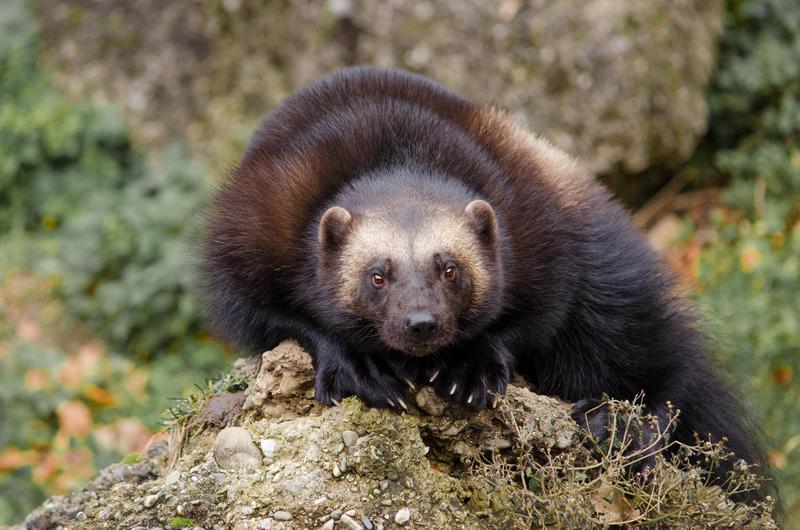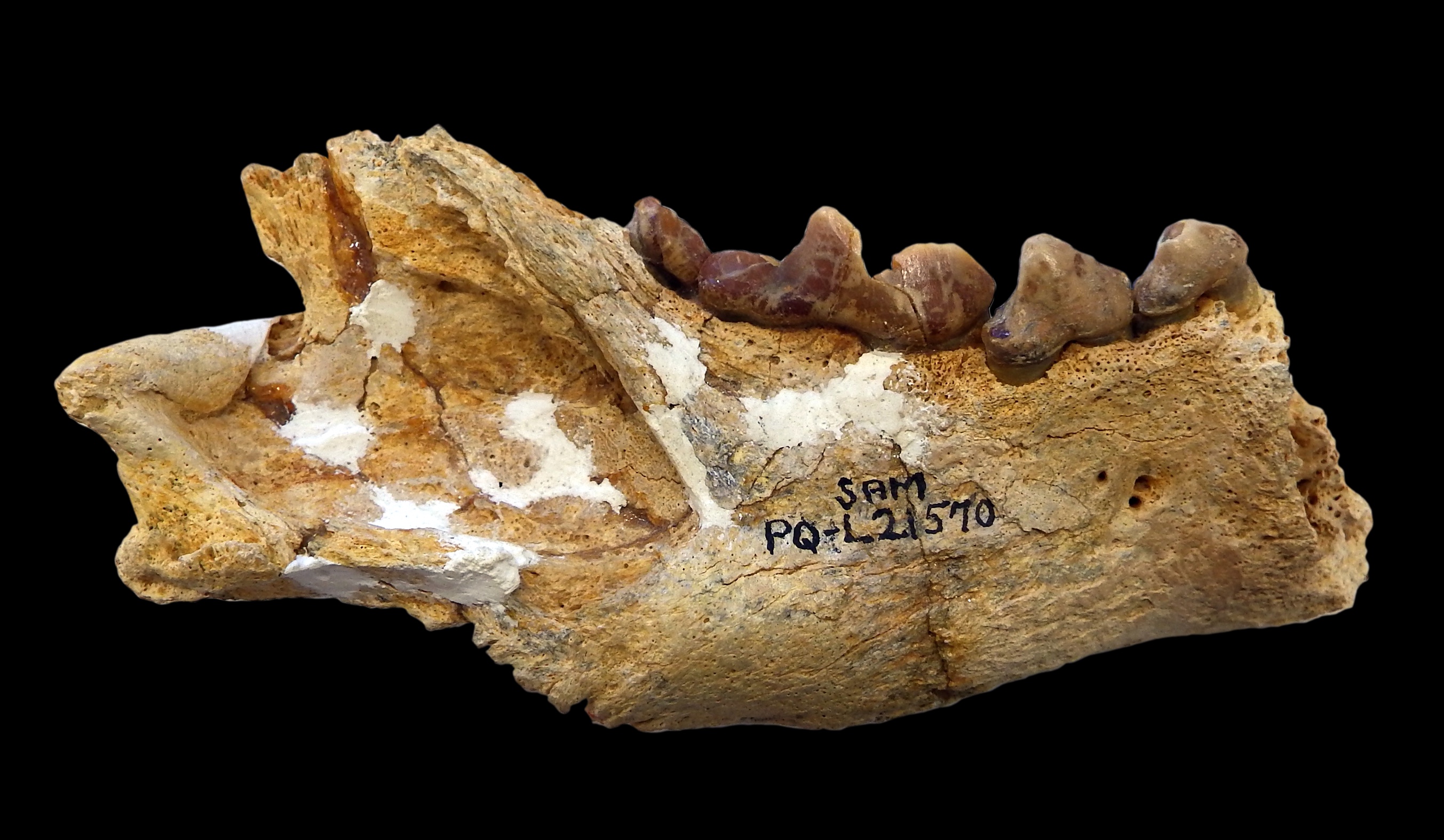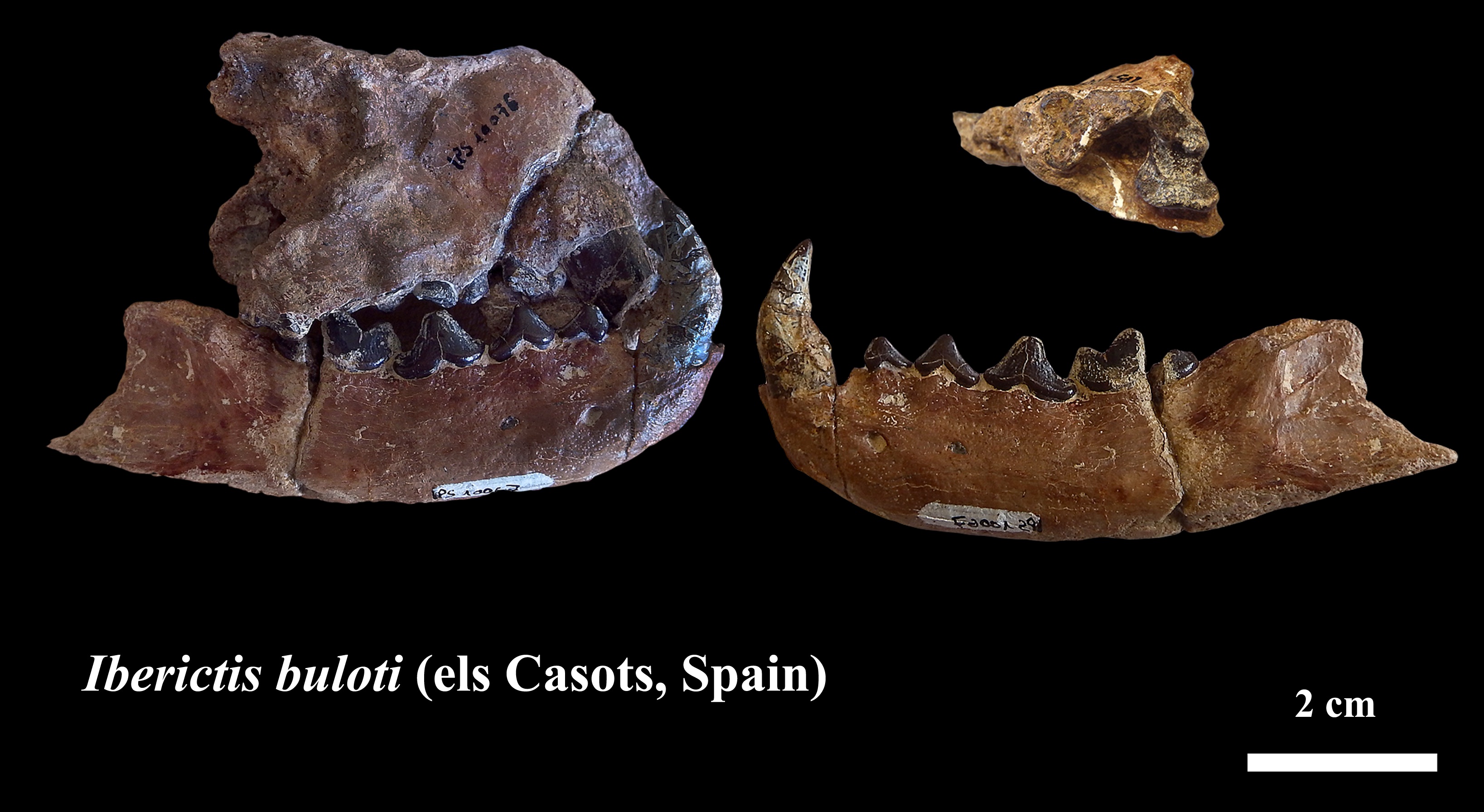Ghost in the wolverine lineage
21 August 2018 | Story Lisa Boonzaier. Read time 10 min.
Today’s wolverines – who, despite their name, are members of the weasel family and look more like badgers than wolves – are known for their bravery and aggression. But at a diminutive nine to 18 kilograms they are not much bigger than a medium-sized dog. Go back 5 to 10 million years, however, and wolverines were not only larger but also lived across more of the globe. New research by UCT palaeobiologist Dr Alberto Valenciano shows that there may be a ghost wolverine lineage linking modern day wolverines to ancient ones as far back as 16 million years ago.
Found in remote forests and tundra of the northern hemisphere, wolverines are notorious for their fearlessness and aggression, able to take down animals many times bigger than themselves, like reindeer. This is even though they are solitary, mostly scavengers and relatively small.
Millions of years ago, a much larger, giant wolverine roamed Earth. Giant wolverines – of the genus Plesiogulo – weighed up to 70 kilograms. “Puma-sized,” says Dr Alberto Valenciano, a postdoctoral researcher at UCT who studies the remains wolverines and their relatives – carnivorous mammals, including weasels, martens, badgers and otters – together known as mustelids.
“Giant wolverines were almost all over the world, in Europe, Asia, North America and Africa,” explains Valenciano “We even have Plesiogulo fossils here in at Langebaanweg, a fossil site on the west coast of South Africa.”
Hypothetical origins
Did today’s wolverines evolve from giant wolverines, or are the two groups more akin to cousins on the evolutionary tree? Scientists have their theories. One places giant wolverines as a direct ancestor of today’s wolverines. Another, based on genetic evidence, suggests that wolverines split from martens – slender, agile mustelids that live in the northern hemisphere – around 5 to 7 million years ago.
Determining whether either of these ideas – or another evolutionary path entirely – represents the true origin of the wolverine is difficult. One of the reasons is because the only evidence we have of these extinct animals is pieces of fossil skeleton: a tooth here, a piece of jawbone there. Just one complete skeleton of any of these species would be a monumental find.

can tell from a fragment of jawbone, such as this one from a giant wolverine excavated at Langebaanweg.
Photo Alberto Valenciano, Iziko Museums of South Africa.
In addition to living wolverines and extinct giant wolverines, scientists have found remains of another group of wolverine-like animals from 16 million years ago: two species called Iberictis – meaning small carnivore from the Iberian Peninsula. How these Iberian relatives of the wolverine fit into the mustelid family tree has been unclear since they were first described in 1992.
Iberian treasure trove
More than 25 years ago, scientists discovered and began exploring a palaeontological site in the north-east of Spain. Called els Casots, the site harbours extensive fossil remains of a variety of vertebrates. It is one of only a handful of places in the country with fossils from the early Miocene period of 15 million to 23 million years ago, which is generally well known in other parts of Europe.
Excavated for just five years until 1994, els Casots has yielded a plethora of remains: fishes, amphibians, reptiles, birds and mammals, including Iberictis. Most of it has yet to be studied.
Although the two species of the new Iberictis genus were first described in 1992, the findings were based on scarce and fragmented remains. Valenciano’s research builds on this research by examining additional Iberictis fossils derived from els Casots and another site in Spain, and investigating the relationship between the new genus and other mustelids.

which lived 16 million years ago. Photo Alberto Valenciano.
The oldest wolverine
To deduce anything useful from fragmentary fossils requires their careful measuring and analysis. The length of a tooth. The gap between two bones. The presence or absence of a cusp. These small pieces of information from a fossilised piece of skeleton, when combined, can help to elucidate relationships between the animals they once were part of.
Using meticulous measurements taken from the remains of mustelids, including those of Iberictis, giant wolverines and today’s wolverines, Valenciano was able to build a sort of “family tree” for the group, illustrating their likely relatedness.
Did today’s wolverines evolve from giant wolverines, or are the two groups more akin to cousins on the evolutionary tree?
Wolverines, the tree shows, might be much older than we previously thought.
In contrast to what some palaeontologists have hypothesised, Valenciano’s research shows that giant wolverines are not likely ancestors of today’s wolverines, but a separate, sister lineage more closely related to Iberictis. As such, today’s wolverines may have shared with giant wolverines and Iberictis a common ancestor – that is currently unknown.
Given the age of the Iberictis remains – 16 million years – this casts a new light on the age of wolverines, as their common ancestor would have lived before that.
“This is such an exciting finding since it extends the fossil history of wolverines back to 16 million years,” says Professor Anusuya Chinsamy-Turan, a UCT palaeobiologist who is working with Valenciano on his current research looking at the carnivores of Langebaanweg. “We are quite excited to see how Alberto’s new work on the South African fossil material is going help us understand how this lineage evolved.”
Valenciano’s results provide answers but, as is usual with science, they also pose new questions: they present the existence of a ghost wolverine lineage – one that is inferred to exist but has no fossil record – extending from the common ancestor to today. Should Valenciano’s tree be accurate, it would mean we have no information about this stretch of the wolverine’s ancestry.
Perhaps more complete remains of these wolverine ancestors are waiting to be uncovered in the sands of els Casots or Langebaanweg.
“We are still digging at Langebaanweg, and after 25 years, els Casots will be re-open for digging very soon,” says Valenciano. “I will join the team at the Institut Català de Paleontologia [Catalonia, Spain] to look for more fossils, which is going to be awesome!”
Based at UCT and Iziko Museums of South Africa, Valenciano is now directing his attention to the fossils of Langebaanweg, a palaeontological site near Langebaan on the south-west coast of South Africa. At 5 million years old, the remains at this site are 11 million years younger than those from els Casots.
Langebaanweg was first studied in the 1970s and is being excavated under the lead of Dr Romala Govender from Iziko Museums of South Africa, who also is working with Valenciano.
“There are hundreds of boxes with fossils from Langebaanweg that nobody has checked before together with unpublished material, so the potential for finding new fossils is exponential, including – possibly – species that are new to science,” says Valenciano.
Buried here, in addition to the fossilised remains of giant wolverines, are “other mustelids, but also other carnivores: sabretooth cats, hyaenas, small mongooses, a medium-sized cat (which could be like a caracal or lynx) and a jackal-sized canid, among others”.
 This work is licensed under a Creative Commons Attribution-NoDerivatives 4.0 International License.
This work is licensed under a Creative Commons Attribution-NoDerivatives 4.0 International License.
Please view the republishing articles page for more information.
Research & innovation





































